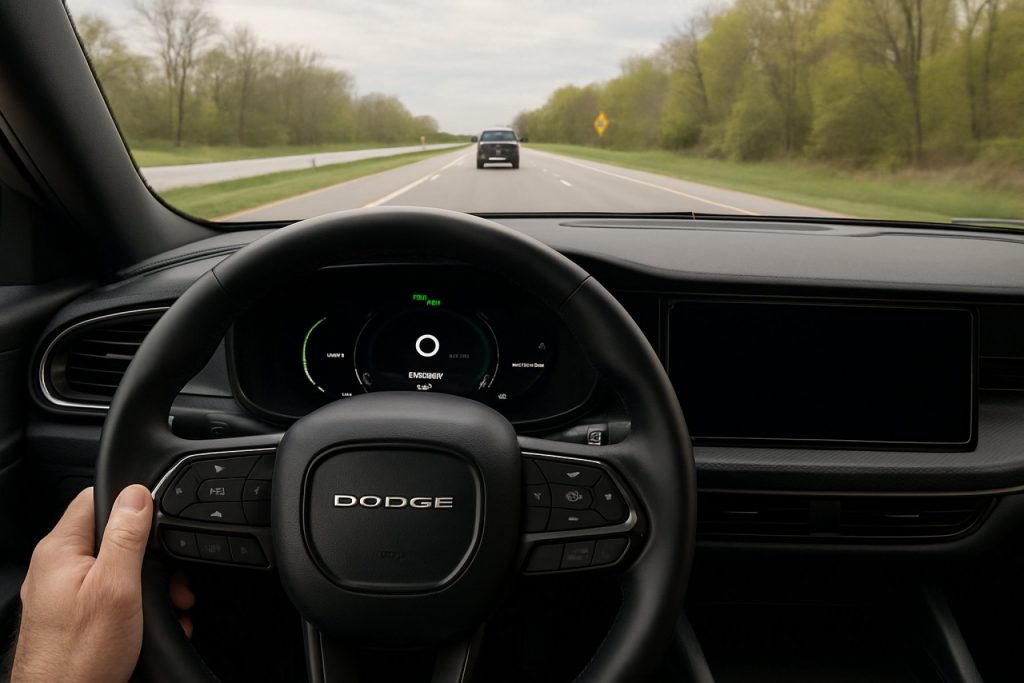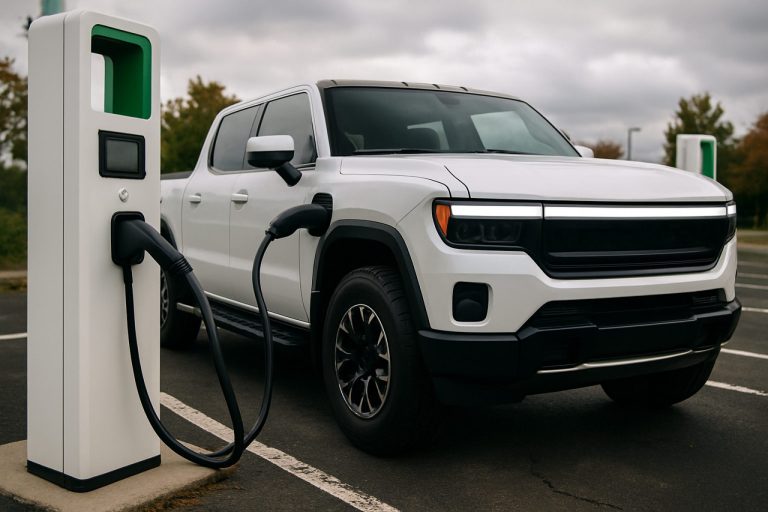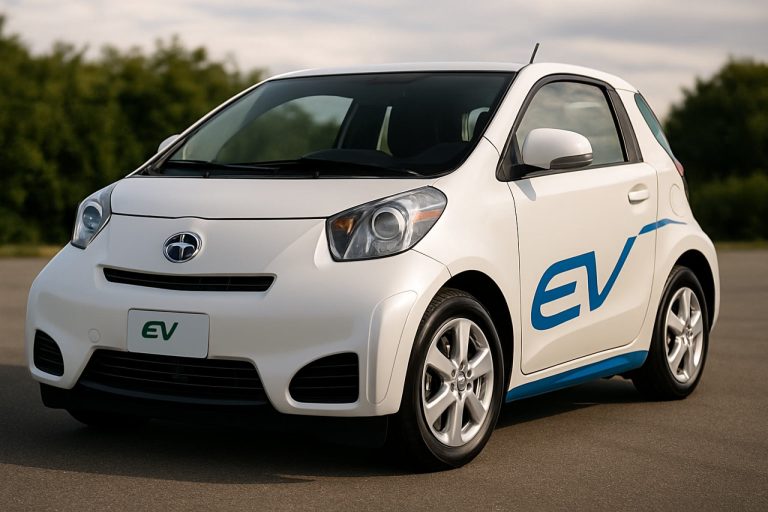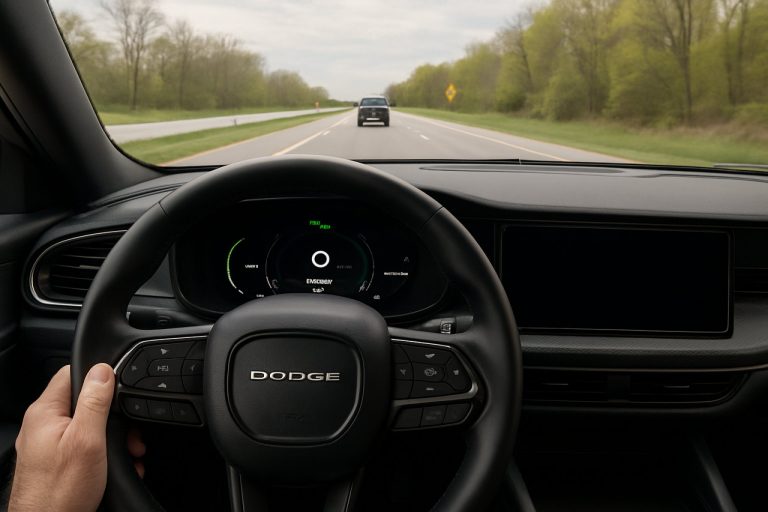
The Truth Behind the Dodge Charger EV’s “Unintended Acceleration”: What Every Driver Needs to Know for 2025
Discover the real reason why Dodge Charger EVs sometimes move on their own. Learn about Stellantis’ Drive By Brake system and your safety in 2025.
- 1 mph/sec: The max speed increase in Drive By Brake mode if a fault is detected
- 50 mph: Vehicle remains maneuverable even at freeway speeds
- Multiple Models: Feature active in various Stellantis EV, hybrid, and gas cars
- Brakes Always Functional: Brake pedal overrides Drive By Brake at any time
If you’ve ever seen a Dodge Charger EV creep forward while nobody touches the pedals, you’re not alone. Reports, including a recent one by Edmunds, show this unnerving scenario caught even veteran testers off guard. The culprit? Not a malfunction, but a high-tech safety feature called “Drive By Brake”—now confirmed to be rolling out across more Stellantis vehicles into 2025.
Originally raising alarms about “unintended acceleration,” the incident had car owners and tech enthusiasts scratching their heads. Why would a brand-new performance car start moving on its own? Here’s what’s really happening inside these futuristic vehicles.
Q: What Is the Drive By Brake System—And What Triggers It?
Stellantis engineers designed Drive By Brake to step in when the car senses an issue with the accelerator pedal. Instead of stalling in a live lane, the system allows the vehicle to move at a slow, controlled speed—just enough to safely pull off the road or navigate to a secure stop, even if the greasy digital gremlins have locked up your gas pedal input.
The car flashes cryptic dashboard warnings like a turtle or wrench symbol, plus messages such as “Service Engine Soon.” The system instantly limits power, but slowly builds speed at about 1 mph per second—never fast enough to endanger control but quick enough to exit a hazard zone.
How Does It Actually Work in Real Life?
Here’s where things get interesting. Even if you never touch the pedals, the Charger (and other Stellantis models equipped with Drive By Brake) will gently roll forward. The system’s goal: stop you from becoming a sitting duck on the highway. The feature cuts the motor’s torque to a crawl, making sure you don’t get stranded if trouble hits at 50 mph.
Crucially, the brakes ALWAYS override this system. Step on the brake pedal and you regain full stopping control—the car instantly halts, as if nothing ever happened.
Q: Which Models Have This Feature in 2025?
Stellantis isn’t limiting Drive By Brake to just EVs. According to the automaker, the system is now live in North American gasoline, hybrid, and electric vehicles—though official lists remain under wraps. Look for the safety tech in Dodge, Chrysler, Jeep, and RAM nameplates. Want to keep up with Stellantis releases? Check updates on Stellantis and Dodge.
Why the Cryptic Warnings—And Will Drivers Be Better Informed?
Despite being touted as a lifesaver, the Drive By Brake feature has drawn criticism for confusing dashboard alerts and scant in-manual documentation. Stellantis now says it’s reworking its messaging to ensure drivers know exactly what’s going on.
In the meantime, here’s the inside scoop: If you see a turtle, a wrench, “Service Engine,” or “Service Propulsion” warning while the car creeps forward, don’t panic. The vehicle is in Drive By Brake mode. Just press the brake, steer to safety, and if needed, turn the car off and on again—the system self-checks after each restart.
How Can You Stay Safe if This Happens?
- Do NOT panic—braking will always stop the car.
- If a warning icon appears and the car moves slowly, shift to “Park” or use the brake.
- Safely pull over as soon as possible.
- If restarting the car, check if warnings disappear before resuming travel.
What’s Next for Stellantis and Its High-Tech Failsafes?
As more cars become computer-driven, features like Drive By Brake will only grow. In 2025 and beyond, expect to see these sorts of “smart safety” interventions—sometimes working quietly, sometimes spooking the uninformed driver—appear across the industry. Stay tuned to the latest developments on Carscoops and official automaker sites.
Bottom Line: If Your Car Moves On Its Own, Don’t Panic—Do This Instead:
- Recognize the warning signs: turtle/wrench icons, “Service Engine” messages.
- Use your brakes—they ALWAYS override the system.
- Pull over and restart to clear the warning, if safe to do so.
- Report any ongoing issues to your dealer or service center.
- Stay updated on new car features and safety recalls from sources like NHTSA and Edmunds.
Stay alert, know your dashboard, and drive smarter in 2025!



